The Tit Mouse, or Tufted Titmouse, is a charming backyard bird with a distinctive call and stunning silvery plumage.
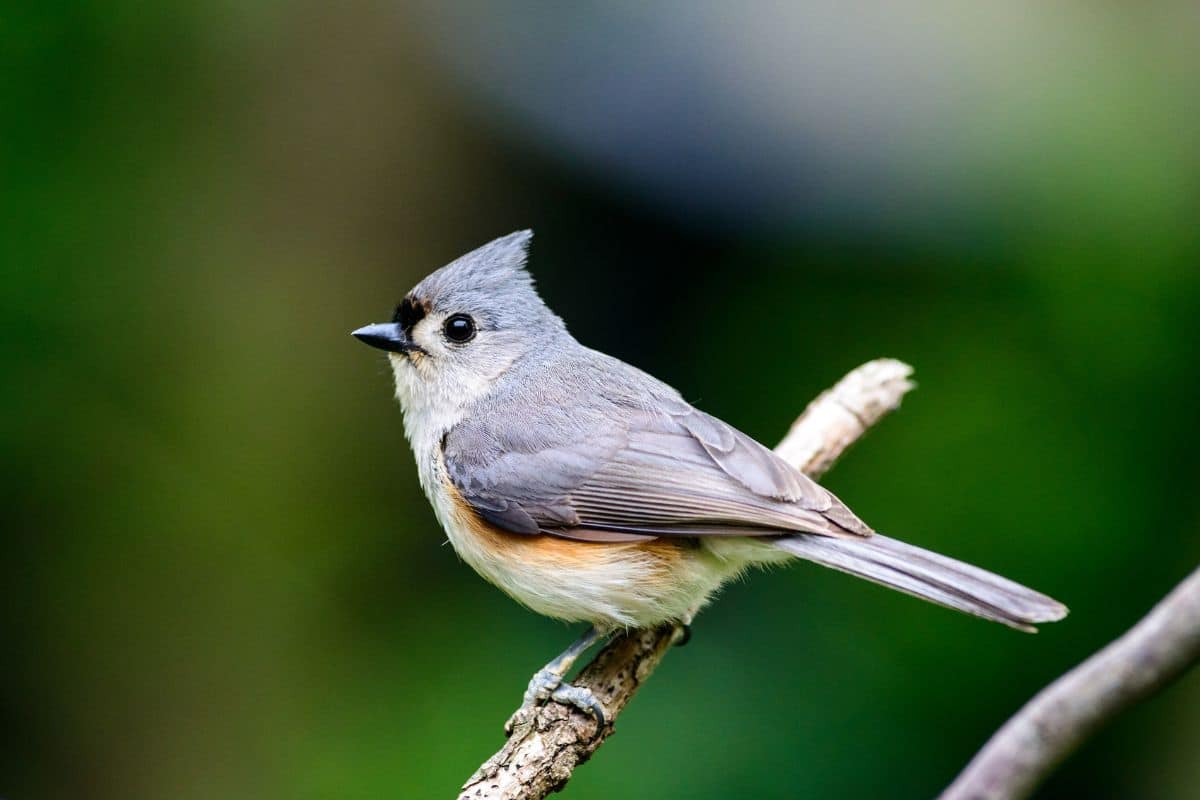
They are active, particularly near food sources such as perch or platform feeders, and will eagerly partake in the bounty during foraging. This activity dominates much of their day.
Contents
Quick Facts
| Classification | Measurement | ||
| Scientific Name | Baeolophus bicolor | Length | 5.5-6.2″ 14-16cm |
| Other Names | Tufted Titmouse | Wingspan | 7.8-10.2″ 20-26cm |
| Family | Chickadees and Titmice | Weight | 18-26g |
| Conservation Status | Low Concern | Average Lifespan | 2.1 years |
| When To See | Year-round | ||
| Where To See | The eastern half of the United States |
What Does a Tit Mouse Look Like?
The Tit Mouse is a small, plump bird with smoky gray plumage on its head and back. Its breast and belly are white with a coral flush adorning the curvature under the wing.
These charming deciduous forest dwellers have large, black eyes with a white ring around the outside and a short, snubbed beak.
Perhaps its most notable feature is the upright crest of gray-head plumage that transitions into a smudge of black feathers on the forehead. The birds can lower their tuft and will often do so while singing.
Despite its relatively small size, it does hold the honor of being the largest North American member of the Paridae family.
How Long Does a Tit Mouse Live For
The average lifespan of the Tufted Tit Mouse is only 2.1 years, but that number is skewed low because of the high nestling mortality rate.
The oldest known example of the Tit Mouse lived in Virginia, where researchers banded the bird in 1962 before finding it again 13 years and three months later, in 1974.
Habitat of the Tit Mouse
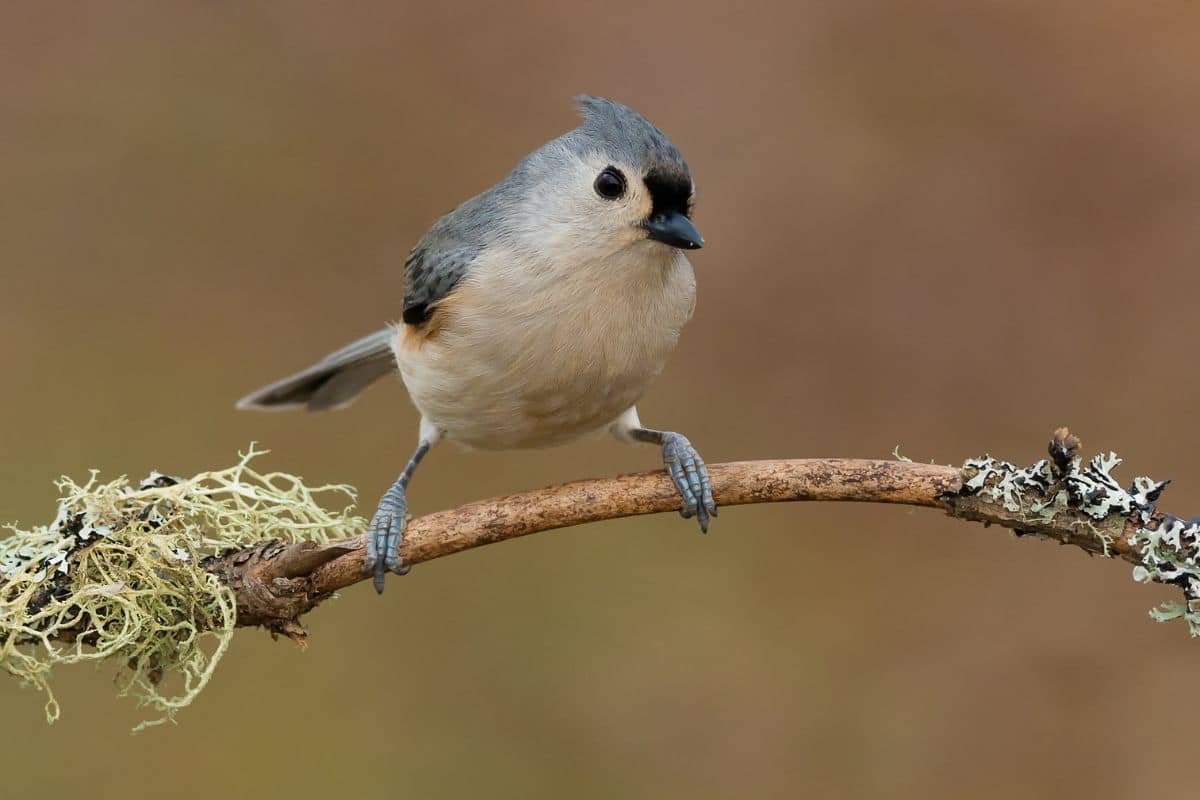
Because they prefer deciduous forest habitats, Tufted Tit Mice spend their lives in a large swath of the Americas ranging from the Atlantic coast to eastern Texas and down into northeastern Mexico.
However, they’ve staked their claim in the coniferous forests of Michigan, Ontario, and New England since the 20th Century.
They are most dense in the Ohio River Valley, with abundant access to acorns and beechnuts even during the harshest winters.
Where To See Tit Mice?
If you live in the eastern United States, you won’t have to go far to spot a Tufted Tit Mouse!
A walk through the park or woodlands will treat you to a flurry of these densely populated songbirds searching for food on outer tree branches and bark of deciduous trees. You’ll get to observe them hopping along the ground in search of wayward nuts and unsuspecting insects.
Do Tit Mice Migrate?
Tit Mice are a non-migratory species. Instead, they adapt to changing seasons by switching to a mainly vegetative diet when cold weather renders their preferred food sources unavailable.
This homebody behavior sets them apart from most songbirds in the United States, as most species will relocate to warmer climes rather than tough out the harsh conditions.
Tit Mouse Behavior
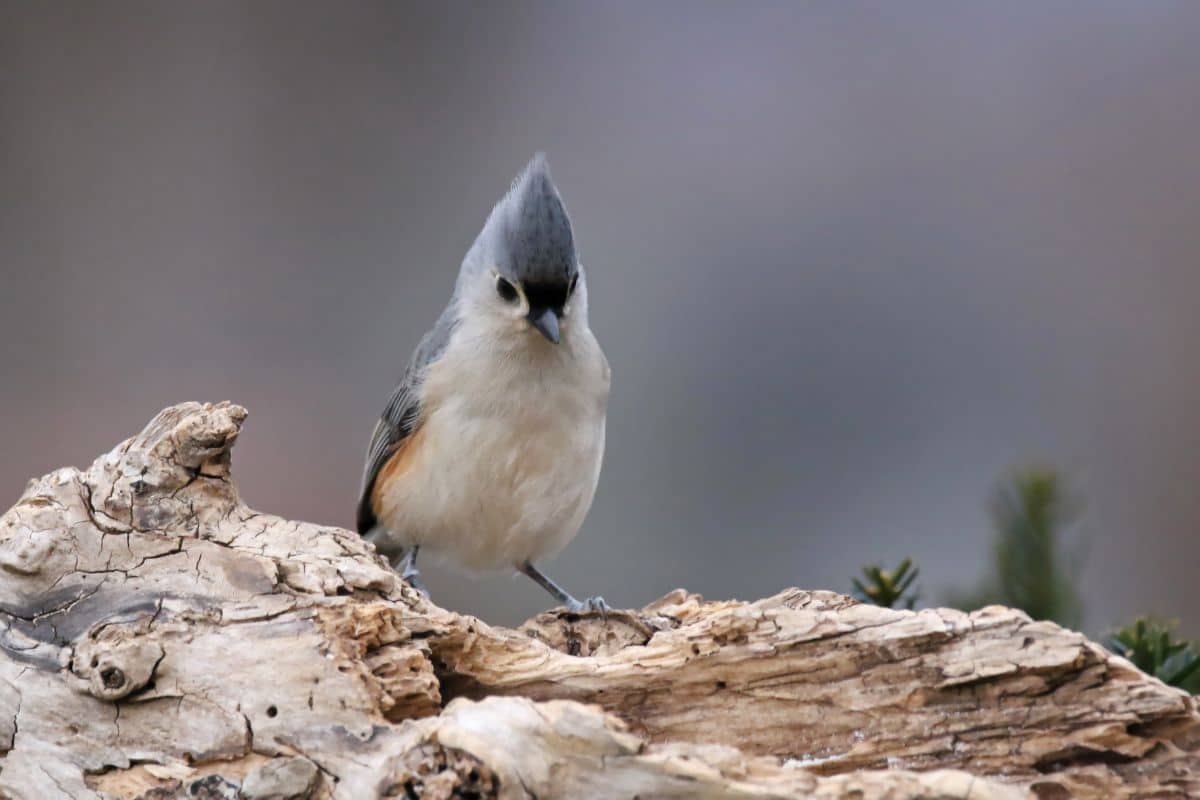
With their plump bodies and excitable temperament, Tit Mice are a joy to watch flit from branch to branch, occasionally turning completely upside down as they search for a feast in the forest.
They are keen preeners, bathing daily when standing water is available in the summer.
Often, winter limits their ability to practice their customary hygiene rituals, but some ornithologists have observed these meticulous creatures attempting to bathe in the snow.
Males are quite territorial, particularly during mating season when it’s not uncommon to find two competitors with interlocked feet beating each other viciously with their wings.
They will often try to chide away interlopers by raising their crest in a show of dominance and scolding them with short bursts of song.
If that doesn’t work, the males will compress their bodies, raise their wings, and vibrate while moving their tails side-to-side until the threat leaves the area.
Interspecies Behavior
The Tit Mouse tends to be a bit of a bully in protecting the best foraging spots, often to the detriment of other, less aggressive species like the chickadee.
Thanks to better nutritional variety, chickadees tend to have significantly more feather growth when they set up habitat niches away from Tit Mice’s food niches.
Despite this antagonistic behavior, the Tit Mouse is a bit of a vigilante hero in its sylvan home. It is prone to investigating when it hears other birds in distress and will eagerly participate in mobbing to chase the threat away.
What Do Tit Mice Sound Like?
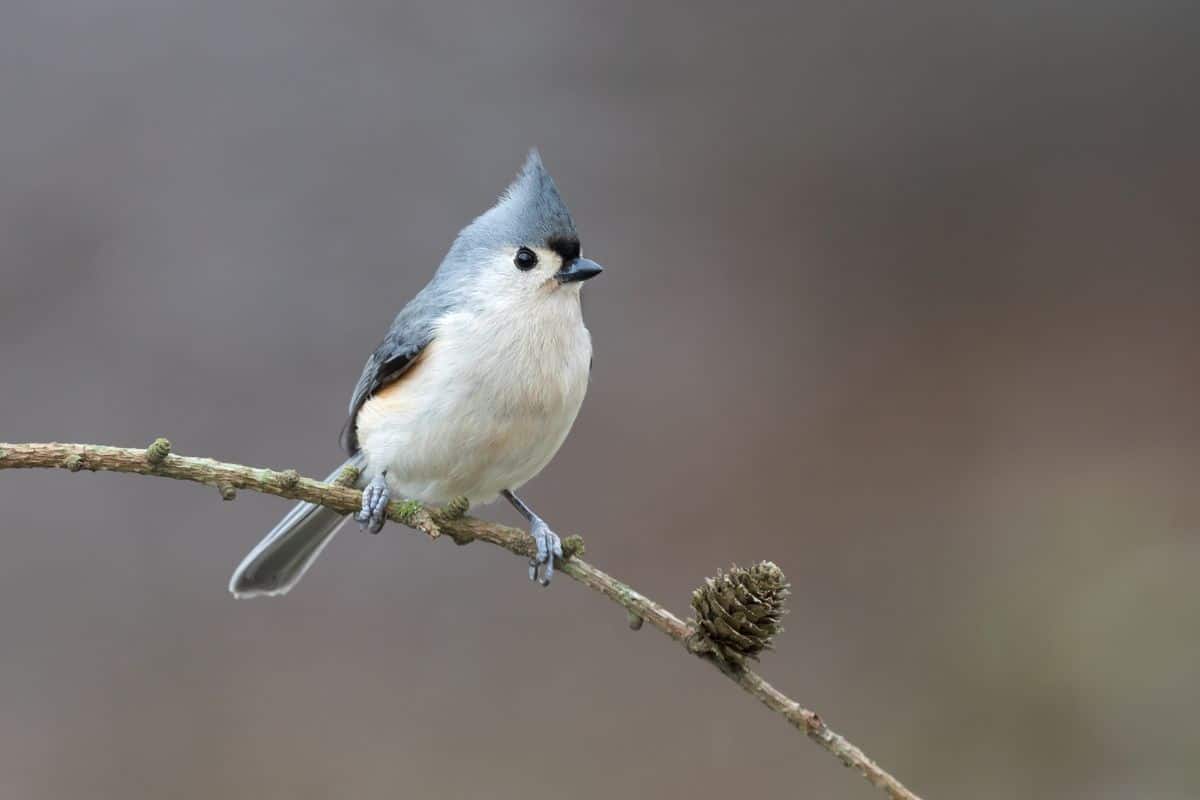
Tufted Tit Mice are passionate vocalists, singing 10 different known calls depending on their purpose and communication partners.
The most widely recognized is a two-note “peter-peter-peter” song that they may repeat up to 11 times in a row. It is a loud, clear whistle that starts on a high note before dropping down for a lower finish.
When a predator approaches, its call depends on the size and threat level, conveying critical information about the threat at hand to surrounding species.
One study published in Behavioral Ecology found that the number of D-notes the Tit Mouse sang in the first two minutes of their song directly correlated to the predator’s body length.
For example, when a Great Horned Owl (55cm) was near, each Tit Mouse sang approximately 35 D-notes.
However, when the predator was the much smaller Eastern Screech Owl, they sang more than 100 D-notes. This trend holds across raptor species, with Tit Mice singing more of these “alarm notes” the smaller the threat was.
What Does a Tit Mouse Eat
For most of the year, Tufted Tit Mice have a mainly insectivorous diet consisting of caterpillars, bees, wasps, and snails.
Once cooler weather sets in and creepy-crawlies are harder to find, they subsist on nuts, seeds, and berries, often hoarding stashes made up of foraged ingredients from feeders, similarly to that of a chickadee.
Tufted Tit Mice rely on these self-stocked “pantries” until springtime, painstakingly filling it seed-by-seed, particularly larger options like black oil sunflower seeds.
They prefer to shell the seed before stowing it away, holding it firmly in their feet while working into the outer hull with their beak.
Final Thoughts
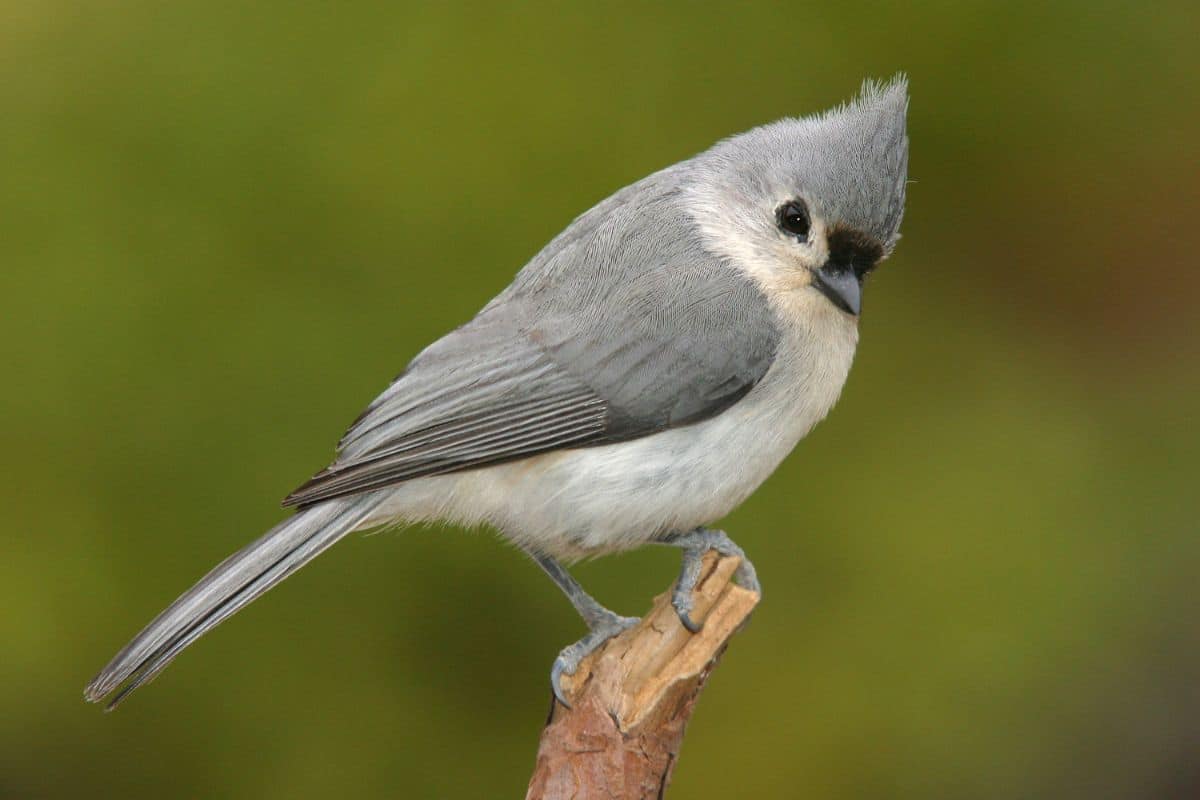
The Tit Mouse is a delightful, year-round backyard visitor with a prominent personality in their rather round bodies.
With expressive crests and distinctive, seemingly never-ending songs, it’s no wonder these charmers have become a favorite of amateur winter birdwatchers longing for the springtime symphony of the songbirds’ return.
